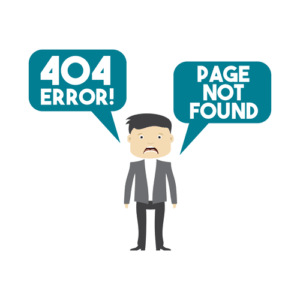Content

Gearing ratios focus more heavily on the concept of leverage than other ratios used in accounting or investment analysis. This conceptual focus prevents gearing ratios from being precisely calculated or interpreted with uniformity. The underlying principle generally assumes that some leverage is good, but too much places an organization at risk.

The Internal Rate of Return is the discount rate that makes the net present value of a project zero. In other https://www.bookstime.com/ words, it is the expected compound annual rate of return that will be earned on a project or investment.
Ratio Definitions
Though it’ll depend on your industry and competitors, this debt ratio is generally considered favorable. If your company has $100,000 in business loans and $25,000 in retained earnings, its debt-to-equity ratio would be 4. This would be considered a high-risk debt ratio and a risky investment. To calculate it, divide your company’s total debt by its total, or shareholder, equity. Times interest earned or Interest Coverage ratio is a measure of a company’s ability to honor its debt payments. It may be calculated as either EBIT or EBITDA divided by the total interest payable.
The term Debt Ratio refers to a financial ratio that measures the extent of a company’s leverage. The debt ratio is defined as the ratio of total debt to total assets, expressed as a decimal or percentage. It can be interpreted as the proportion of a company’s assets that are financed by debt. A ratio greater than 1 shows that a considerable portion of a company’s debt is funded by assets, which means the company has more liabilities than assets. A high ratio indicates that a company may be at risk of default on its loans if interest rates suddenly rise.
This is also true for an individual applying for a small business loan or line of credit. If the business owner has a good personal D/E ratio, it is more likely that they can continue making loan payments while their business is growing. Business owners use a variety of software to track D/E ratios and other financial metrics. Microsoft Excel provides a balance sheet template that automatically calculates financial ratios such as the D/E ratio and debt ratio. The higher the debt ratio, the more leveraged a company is, implying greater financial risk.
Examples Of The Debt Ratio
If you have more debt than equity, you may not qualify for loans. If you have more equity than debt, your business may be more appealing to investors or lenders. High D/A ratios will also mean that the company will be forced to make more interest payments on its debt before net earnings are calculated. Keeping your debt-to-income ratio low will help ensure that you can afford your debt repayments and give you the peace of mind that comes from handling your finances responsibly. It can also help you be more likely to qualify for credit for the things you really want in the future. The larger the debt ratio the greater is the company’s financial leverage.
- Debt-to-income ratio is the amount of your total monthly debt payments divided by how much money you make a month.
- Watching your DTI fall can help you stay motivated to keep your debt manageable.
- EBITDA ignores changes in Working Capital , capital expenditures , taxes, and interest.
- In the banking and financial services sector, a relatively high D/E ratio is commonplace.
- The debt ratio is shown in decimal format because it calculates total liabilities as a percentage of total assets.
- Full BioPete Rathburn is a freelance writer, copy editor, and fact-checker with expertise in economics and personal finance.
- In other words, the company would have to sell off all of its assets in order to pay off its liabilities.
Remember, your DTI is based on your income before taxes – not on the amount you actually take home. Debt ratio is derived by dividing total debt by total assets, and representing that figure as a percentage. 0% indicates that a company or individual has no debt or close to no debt, and 100% indicates that they have debt equal to total assets. It helps investors and creditors to also analyse the total debt of the company, as well as the ability of the company to pay its debts in future, uncertain economic times. A ratio greater than 1 shows that a large part of the assets is financed by debts. You could also say that the company has more liabilities than assets.
What Is The Debt To Asset Ratio?
Common debt ratios include debt-to-equity, debt-to-assets, long-term debt-to-assets, and leverage and gearing ratios. Having a debt ratio higher than 1 does not necessarily mean a company has too much debt or has made bad financial decisions. Instead, it simply means that it relies more heavily on the debt than do other companies with a lower debt ratio. The debt ratio shows your long-term and short-term debt as a percentage of your total assets. The lower your debt-ratio, the better your chances are of qualifying for a mortgage. For instance, capital-intensive companies with stable cash flows operate successfully with a much higher debt ratios.

Dave shouldn’t have a problem getting approved for his loan. Analysis of the D/E ratio can also be improved by including short-term leverage ratios, profit performance, and growth expectations. If working extra hours doesn’t appeal to you, remember – this is just temporary. You can use the income to pay off debt, reducing your ratio and your need to work extra. The debt-to-income ratio surprises many loan applicants who always thought of themselves as good money managers. Whether they want to buy a house, finance a car or consolidate debts, the ratio determines if they’ll be able to find a lender.
For example, preferred stock is sometimes considered equity, but the preferred dividend, par value, and liquidation rights make this kind of equity look a lot more like debt. When using the D/E ratio, it is very important to consider the industry in which the company operates.
Accounting Topics
In a way, we could argue that this ratio is of great importance, as it merely calculates the financial leverage of a firm. For example, a company with a significant number of liabilities and a reduced number of assets is considered highly leveraged. At the same time, lenders might avoid providing financing to such companies. Assessing a firm’s capability of paying off its debt in uncertain economic times is critical. To expand upon your current location, you’ll need to consult with your bank about a loan.
If you have shareholders, you pay them part of your profits. And when it comes time to pay out the shareholder dividends, you base the shareholder earnings on the business’s profits. But if your debt-to-equity is too high, your profits can decrease.
Adam received his master’s in economics from The New School for Social Research and his Ph.D. from the University of Wisconsin-Madison in sociology. He is a CFA charterholder as well as holding FINRA Series 7, 55 & 63 licenses. He currently researches and teaches economic sociology and the social studies of finance at the Hebrew University in Jerusalem. Cause difficulty getting additional credit in case of emergencies. FHA.com is a privately owned website, is not a government agency, and does not make loans. A good FICO score is key to getting a good rate on your FHA home loan.
The intent is to see if a business can at least pay for its interest payments when due, even if the balance of a loan cannot be repaid. This measure works well in cases where a loan is expected to be rolled over into a new loan when it reaches maturity. At a fundamental level, gearing is sometimes differentiated from leverage. This difference is embodied in the difference between the debt ratio and the D/E ratio. These balance sheet categories may contain individual accounts that would not normally be considered “debt” or “equity” in the traditional sense of a loan or the book value of an asset.
- A debt ratio is a financial ratio that measures the size of a company’s leverage.
- The debt ratio of financing can go as high as 80% in some cases.
- Bank of America and/or its affiliates, and Khan Academy, assume no liability for any loss or damage resulting from one’s reliance on the material provided.
- The leverage the borrowed funds creates allows investors to have a greater amount of return on their money.
- There is no absolute number–or even firm guidelines–for a ‘safe’ maximum debt ratio.
The larger your company debt ratio, the greater its financial leverage. If you own a business, it’s important to calculate and analyze the amount of money your company owes in relation to its total assets. In essence, your debt ratio allows you to determine whether or not your company will be able to pay off its liabilities with its assets.
Debt Management Ratios
A lower debt ratio usually implies a more stable business with the potential of longevity because a company with lower ratio also has lower overall debt. Each industry has its own benchmarks for debt, but .5 is reasonable ratio. The cost of debt is the return that a company provides to its debtholders and creditors.
Harold Averkamp has worked as a university accounting instructor, accountant, and consultant for more than 25 years. He is the sole author of all the materials on AccountingCoach.com. The content on this page provides general consumer information.

Get a little extra cash back in your wallet by lowering your monthly payments and better managing your debts. In most cases, a lower debt quotient means a more stable company with longevity potential because a company with a lower ratio also has less total debt. However, each industry uses its own benchmarks for debts, with 0.5 being an okay ratio. What counts as a “good” debt-to-equity (D/E) ratio will depend on the nature of the business and its industry.
Rocket Mortgage
Including preferred stock in total debt will increase the D/E ratio and make a company look riskier. Including preferred stock in the equity portion of the D/E ratio will increase the denominator and lower the ratio. It can be a big issue for companies such as real estate investment trusts when preferred stock is included in the D/E ratio. For example, a prospective mortgage borrower who is out of a job for a few months is more likely to be able to continue making payments if they have more assets than debt.
Investopedia requires writers to use primary sources to support their work. These include white papers, government data, original reporting, and interviews with industry experts.
Evidence from studies of mortgage loans suggest that borrowers with a higher debt-to-income ratio are more likely to run into trouble making monthly payments. The 43 percent debt-to-income ratio is important because, in most cases, that is the highest ratio a borrower can have and still get a Qualified Mortgage. The company has a healthy balance sheet, with strong cash flow and low debt ratios. Both the total liabilities and total assets can be found on a company’s balance sheet. Monthly debt payments are any payments you make to pay back a creditor or lender for money you borrowed. Your DTI ratio should help you understand your comfort level with your current debt situation and determine your ability to make payments on any new money you may borrow.
Some industries, such as banking, are known for having much higher debt-to-equity ratios than others. A debt ratio of 30% may be too high for an industry with volatile cash flows, in which most businesses take on little debt. A company with a high debt ratio relative to its peers would probably find it expensive to borrow and could find itself in a crunch if circumstances change. Conversely, a debt level of 40% may be easily manageable for a company in a sector such as utilities, where cash flows are stable and higher debt ratios are the norm. The front-end ratio only considers debt directly related to a mortgage payment. It is calculated by adding the mortgage payment, homeowner’s insurance, real estate taxes and homeowners association fees and dividing that by the monthly income.
Here’s how to tell if your debt is out of proportion to your income. Power 2014 – 2021 Primary Mortgage Servicer Satisfaction Studies of customers’ satisfaction with their mortgage servicer company. Second, your lender must consider the income of everyone in the household when evaluating your eligibility for a USDA loan.
Creditors use the debt ratio to determine existing debt level and repayment capability of a company before extending any additional loans. High leverage can make borrowing more difficult and expensive.
The debt to assets ratio (D/A) is a leverage ratio used to determine how much debt a company has on its balance sheet relative to total assets. This ratio examines the percent of the company that is financed by debt.